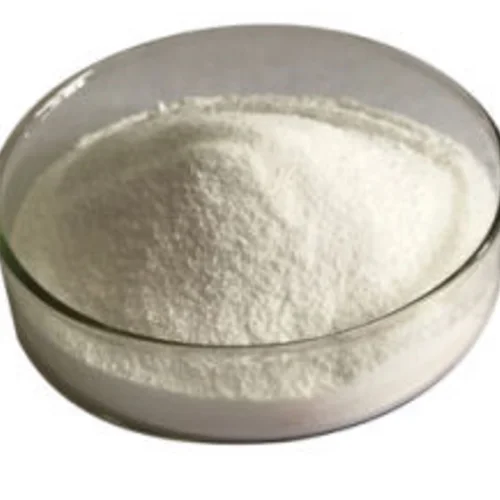 A brand new trans-4-hydroxy-l-proline (trans-Hyp) producing Bacillus cereus HBL-AI, was isolated from the air, which was screened just utilizing l-proline as carbon and power sources. Hydrolysing the soluble protein secreted by Escherichia coli in trans-4-hydroxy-L-proline fermentation increased dissolve oxygen to advertise excessive-level trans-4-hydroxy-L-proline production. Keywords: Bacillus cereus; bioconversion; genomic sequence; proline-4-hydroxylase; trans-4-hydroxy-l-proline. Keywords: chemical assay; enzymatic assay; proline measurement; sensitivity; specificity. Keywords: Crystal construction; Dehydratase; Thermococcus litoralis; trans-3-Hydroxy-l-proline. The binding mode of the PRS inhibitor to the ATP site of PRS enzyme was elucidated using the ternary complex crystal structure with l-proline. By incorporating details about enzymatic chemistry into quantitative metagenomics, we determined the abundance and distribution of individual members of the glycyl radical enzyme superfamily among the many microbiomes of wholesome humans. This enzyme belonged to a household of 2-oxoglutarate-related dioxygenases, which required 2-oxoglutarate and O2 as co-substrates for the reaction. The levels of DAHP Synthase, the first Enzyme of the Shikimate Pathway, Are Related to Free Aromatic Amino Acids and Glutamine Content in Nicotiana plumbaginifolia Cell Cultures.
A brand new trans-4-hydroxy-l-proline (trans-Hyp) producing Bacillus cereus HBL-AI, was isolated from the air, which was screened just utilizing l-proline as carbon and power sources. Hydrolysing the soluble protein secreted by Escherichia coli in trans-4-hydroxy-L-proline fermentation increased dissolve oxygen to advertise excessive-level trans-4-hydroxy-L-proline production. Keywords: Bacillus cereus; bioconversion; genomic sequence; proline-4-hydroxylase; trans-4-hydroxy-l-proline. Keywords: chemical assay; enzymatic assay; proline measurement; sensitivity; specificity. Keywords: Crystal construction; Dehydratase; Thermococcus litoralis; trans-3-Hydroxy-l-proline. The binding mode of the PRS inhibitor to the ATP site of PRS enzyme was elucidated using the ternary complex crystal structure with l-proline. By incorporating details about enzymatic chemistry into quantitative metagenomics, we determined the abundance and distribution of individual members of the glycyl radical enzyme superfamily among the many microbiomes of wholesome humans. This enzyme belonged to a household of 2-oxoglutarate-related dioxygenases, which required 2-oxoglutarate and O2 as co-substrates for the reaction. The levels of DAHP Synthase, the first Enzyme of the Shikimate Pathway, Are Related to Free Aromatic Amino Acids and Glutamine Content in Nicotiana plumbaginifolia Cell Cultures.
 Regulation of levels of proline as an osmolyte in plants underneath water stress. Enzymology and Regulation of δ1-Pyrroline-5-Carboxylate Synthetase 2 From Rice. Biosynthesis of trans-4-hydroxyproline by recombinant strains of Corynebacterium glutamicum and Escherichia coli. Engineering Corynebacterium glutamicum for the de novo biosynthesis of tailor-made poly-γ-glutamic acid. Enhancement of ornithine production in proline-supplemented Corynebacterium glutamicum by ornithine cyclodeaminase. De Novo Engineering of Corynebacterium glutamicum for l-Proline Production. On this study, the optimized C. glutamicum genome-modifying instruments have been additional applied in the de novo building of a hyper-l-proline-producing pressure. Performance of the optimized P5CR reaction for proline quantification. By optimizing the response conditions, fast, simple, and reproducible measurement of L-proline focus was achieved, with similar sensitivity but greater specificity than the commonly used ninhydrin strategies. Optimization of the ninhydrin response and development of a multiwell plate-primarily based excessive-throughput proline detection assay. Reproducible Molecularly Imprinted Piezoelectric Sensor for Accurate and Sensitive Detection of Ractopamine in Swine and Feed Products. Stereospecific Self-Assembly Processes of Porphyrin-Proline Conjugates: From the Effect of Structural Features and Bulk Solvent Properties to the application in Stereoselective Sensor Systems. Effect of various protease sorts and concentrations on the OD 600 , protein…
Regulation of levels of proline as an osmolyte in plants underneath water stress. Enzymology and Regulation of δ1-Pyrroline-5-Carboxylate Synthetase 2 From Rice. Biosynthesis of trans-4-hydroxyproline by recombinant strains of Corynebacterium glutamicum and Escherichia coli. Engineering Corynebacterium glutamicum for the de novo biosynthesis of tailor-made poly-γ-glutamic acid. Enhancement of ornithine production in proline-supplemented Corynebacterium glutamicum by ornithine cyclodeaminase. De Novo Engineering of Corynebacterium glutamicum for l-Proline Production. On this study, the optimized C. glutamicum genome-modifying instruments have been additional applied in the de novo building of a hyper-l-proline-producing pressure. Performance of the optimized P5CR reaction for proline quantification. By optimizing the response conditions, fast, simple, and reproducible measurement of L-proline focus was achieved, with similar sensitivity but greater specificity than the commonly used ninhydrin strategies. Optimization of the ninhydrin response and development of a multiwell plate-primarily based excessive-throughput proline detection assay. Reproducible Molecularly Imprinted Piezoelectric Sensor for Accurate and Sensitive Detection of Ractopamine in Swine and Feed Products. Stereospecific Self-Assembly Processes of Porphyrin-Proline Conjugates: From the Effect of Structural Features and Bulk Solvent Properties to the application in Stereoselective Sensor Systems. Effect of various protease sorts and concentrations on the OD 600 , protein…
Mechanisms of Protein Folding (2nd ed.). A new genome-scale metabolic mannequin of Corynebacterium glutamicum and its application. Strategy for enhancing L-isoleucine manufacturing efficiency in Corynebacterium glutamicum. Production of L-valine from metabolically engineered Corynebacterium glutamicum. 12 Study on the fermentative manufacturing of L-proline, Ⅰ. This technique described right here supplies an environment friendly methodology for production of Hyp and thus has a terrific potential in industrial utility. Objective: K. pneumoniae, a standard pathogen that frequently causes bacteremia in clinic, is unresponsive to most of recognized antibiotics, thus cumulatively exacerbating empirical therapy failures. Soon after inoculation, yeast start to rapidly consume the out there assimilable nitrogen with up to 46% of YAN being totally consumed by the onset of full fermentation. The lack of protease enzymes, which break down larger peptides into smaller components, that can work outdoors the cell, limits the scale of the molecules that yeast can use as a source for nitrogen. • Eggs, especially egg whites, are a very good source of proline. Appropriate Activity Assays Are Crucial for the specific Determination of Proline Dehydrogenase and Pyrroline-5-Carboxylate Reductase Activities. NAD(P)H. Here we characterized this reverse reaction utilizing recombinant enzymes from Arabidopsis thaliana and Oryza sativa, and demonstrated its utility for the precise quantification of L-proline.
On common, 0.05 and 0.07% of the bacterial and archaeal proteomes (complete amino acids of LCRs in a given proteome/complete amino acids supplier for food industry acids of that proteome) type LCRs whereas for 5 model eukaryotic proteomes (human, fruitfly, yeast, fission yeast, Arabidopsis) this coverage was significantly higher (on common, 0.4%; between 2 and 23 occasions larger than prokaryotes). Since RNA duplex transition temperatures increased with GC content, the extra favorable proline interactions with the excessive GC content material duplex floor space noticed from thermal denaturation resulted from the temperature dependence of proline interactions rather than the RNA floor chemical composition. Conversely, oxidized tannin was extra hydrophobic and the affiliation with poly-l-proline was entropy-driven as a consequence of a change of solvation. Application of PHA surface binding proteins of alkali-tolerant Bacillus as surfactants. 1. Richards F. M., Kundrot C. E., Proteins Struct. 1. Binzel M., Hasegawa P., Rhodes D., Handa S., Handa A., Bressan R. (1987). Solute accumulation in tobacco cells adapted to NaCl.

